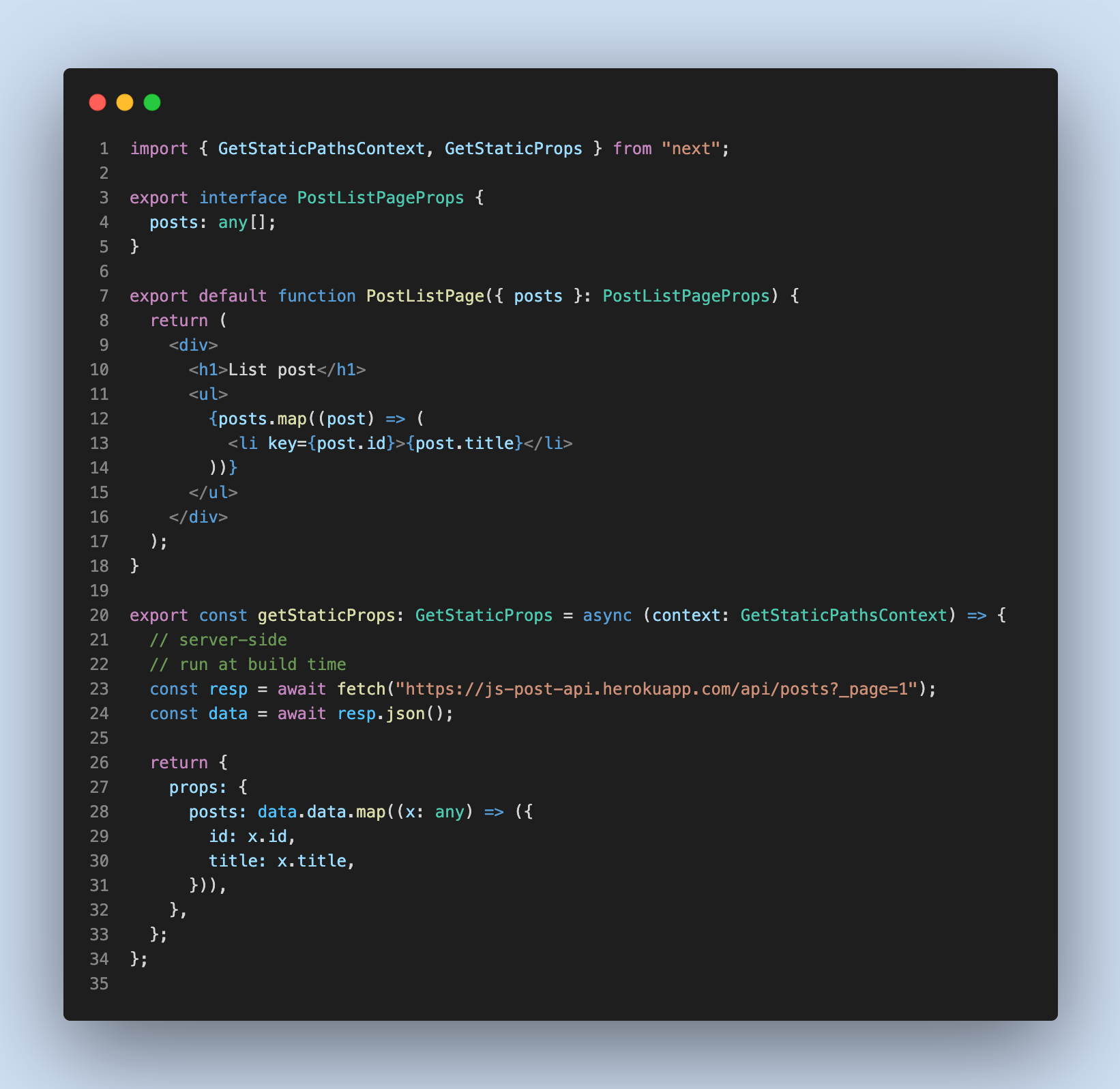SSR - Server side rendering
- The HTML is generated on each request (run-time)
SSG - Static side generate
- The HTML is generated at build-time and is reused for each request.
- Use CDN for serving static file faster
CSR - Client side rendering
- Server returns JS file, and HTML is rendered from browser
- Usually: SSG without Data + Fetch data on Client-side
ISR: Incremental Static Regeneration
- Use case:
- There are 1 million products, but we can not generate 1 million static files (long build time)
- We generate 1,000 static files for 1,000 common products
- For the rest, when user access a page, it will use SSR for the first time, then also generate static file so that the next request can use SSG
More notes
- Use case:
- SSG + CSR: private web (dashboard, admin tools,…)
- SSG/ISR: public web (e-commerce, blog,…)
- In NextJS, you can choose which pre-rendering form to use for each page
| # | Name | Description |
|---|---|---|
| 1 | Static | Automatically rendered as static HTML (uses no initial props) |
| 2 | SSG | automatically generated as static HTML + JSON (uses getStaticProps) |
| 3 | ISR | incremental static regeneration (uses revalidate in getStaticProps) |
| 4 | SSG + CSR | pre-rendered HTML + data fetching on client side using useEffect |
| 5 | SSR | server-side renders at runtime (uses getInitialProps or getServerSideProps) |

